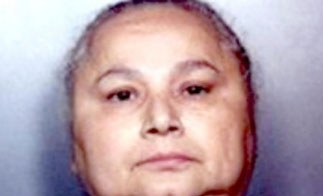The life of recently-murdered Griselda Blanco, a Colombian woman who was an early pioneer of cocaine trafficking in Miami, illustrates the way the ilicit trade has changed since its heyday.
Griselda Blanco, alias “the Queen of Cocaine,” was assassinated on September 3 in Medellin by two unknown gunmen riding on a motorcycle, 40 years after she made a name for herself as one of the first people to traffic cocaine into the United States on a large scale.
The identities of her murderers are unknown, but there seems to be no end to the list of those with a grudge against her. Ex-Miami police investigator Nelso Andreu told the Miami Herald that the only surprising element of her murder was the timing; he and anyone familiar with Blanco’s case expected her to be killed far sooner. “When you kill so many and hurt so many people like she did, it’s only a matter of time before they find you and try to even the score,” Andreu said.
Ultimately, as the Herald points out, Blanco’s death is a fitting end for someone who has been credited with popularizing “motorcycle assassins” during the peak of her criminal career.
InSight Crime Analysis
During the cocaine boom in the US from the mid-1970s to 1980s, Blanco was one of the key managers of the routes used by the infamous Medellin Cartel to smuggle cocaine into Miami. She protected these routes carefully, making a name for herself as a dangerous person to cross. According to law enforcement interviewed for the 2006 documentary “Cocaine Cowboys” (see below) Blanco and her enforcers were responsible for the majority of homicides in South Florida from 1979 to 1982.
Eventually, Blanco was arrested and linked to three murders, and in 1985 she was sentenced to 20 years in prison. After her release in 2004, she was deported to Colombia, and has lived in Medellin ever since. The changes that took place within the hemisphere’s drug trade during her time in prison would likely have shocked her.
In the aftermath of her arrest, the seemingly untouchable Pablo Escobar was gunned down, and his cocaine trafficking empire splintered. This period also saw US law enforcement crack down on smuggling routes through the Caribbean, ending Colombia’s status as the primary transit point for cocaine headed north. This forced traffickers to turn to overland routes through Mexico and Central America, which contributed to the rise of powerful Mexican groups like the Beltran Leyva Organization and Sinaloa Cartel.
It appears, however, that this dynamic is on the verge of shifting yet again. In recent years a number of US drug enforcement authorities have warned that the increased pressure that the governments of Mexico and Central America could create an incentive for drug trafficking networks to return to the Caribbean routes. This was echoed in November 2011 by the State Department’s top drug policy diplomat, William Brownfield, who said that the most powerful criminal organizations in the hemisphere are “in the process of being chased out of Mexico” and are increasingly looking towards the Caribbean.
This trend may already be underway, as the size of drug seizures have increased dramatically in recent years. Law enforcement has already documented the shift in such places as Puerto Rico, Cuba, and Jamaica. There has also been a sharp increase in gang-related violence in the Caribbean, a problem which could worsen if the flow of cocaine through the area increases.
Still, the regional cocaine trade is unlikely to reach the rush that it saw in the late 1970s, with Miami as its base. For one thing, there has been a considerable drop in demand for the drug in the US, with cocaine prices falling by at least 75 percent. More importantly, the advent of modern technology keeps US port security tighter than it used to be 30 years ago, making it difficult to smuggle massive quantities of the drug in shipping containers. This is the reason drug traffickers continue to prefer the US/Mexico border, as a combination of the law of averages and bribery ensures that enough of their product will make it through.

